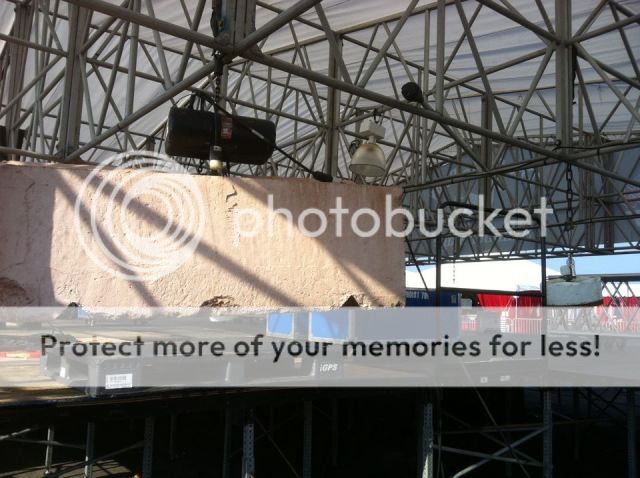Just my outside opinion here. I work with tall radio towers where many of the issues are the same. As a broadcast engineer, I am often the go between to both the riggers who build them and the structural engineers who design them. We have good riggers working on them, but they don't know as much as structural engineers (but they think they do). We have structural engineers who are absent some of the knowledge of the riggers about how things actually happen in the field (but they think they do). But, the difference is that they have a standards organization that is working together. The standards include factors like potential wind, ice, and the combination of the two. And their standards usually get adopted by state and local governments into the building code. As a result, towers are much safer now than they were a few short years ago.
As far as I know, there are few and incomplete standards for these stages. The manufacturers are designing them to work in ideal conditions, but the real world has high winds, absent or poorly placed anchor points, uneven ground, heavier speaker arrays, etc. The riggers are capable, but they don't have the knowledge they need for such complex systems. The structural engineers are well trained, but they need more real world experience with this very specialized type of structure. Riggers and engineers don't have as much background in meteorology and aerodynamics as needed to factor in those variables. To put it bluntly, the whole industry is working in a vacuum.
What it'll take is more Harry Donovan types. People who are both riggers and engineers, to "write the book" on these large, temporary structures, just as Harry did for hanging in arenas. The industry will have to create a standards organization just like the tower industry did. It will set standards for the manufacturers to build to, and rules for riggers to follow, and the standards will have to be adopted and enforced by local jurisdictions. Training to the standards will educate. The standards will continually evolve as knowledge improves and technology changes. Until this happens, more deaths will occur.
I hope I am wrong and that the industry is already proactively doing these things, but the accidents suggest otherwise.
As far as I know, there are few and incomplete standards for these stages. The manufacturers are designing them to work in ideal conditions, but the real world has high winds, absent or poorly placed anchor points, uneven ground, heavier speaker arrays, etc. The riggers are capable, but they don't have the knowledge they need for such complex systems. The structural engineers are well trained, but they need more real world experience with this very specialized type of structure. Riggers and engineers don't have as much background in meteorology and aerodynamics as needed to factor in those variables. To put it bluntly, the whole industry is working in a vacuum.
What it'll take is more Harry Donovan types. People who are both riggers and engineers, to "write the book" on these large, temporary structures, just as Harry did for hanging in arenas. The industry will have to create a standards organization just like the tower industry did. It will set standards for the manufacturers to build to, and rules for riggers to follow, and the standards will have to be adopted and enforced by local jurisdictions. Training to the standards will educate. The standards will continually evolve as knowledge improves and technology changes. Until this happens, more deaths will occur.
I hope I am wrong and that the industry is already proactively doing these things, but the accidents suggest otherwise.



